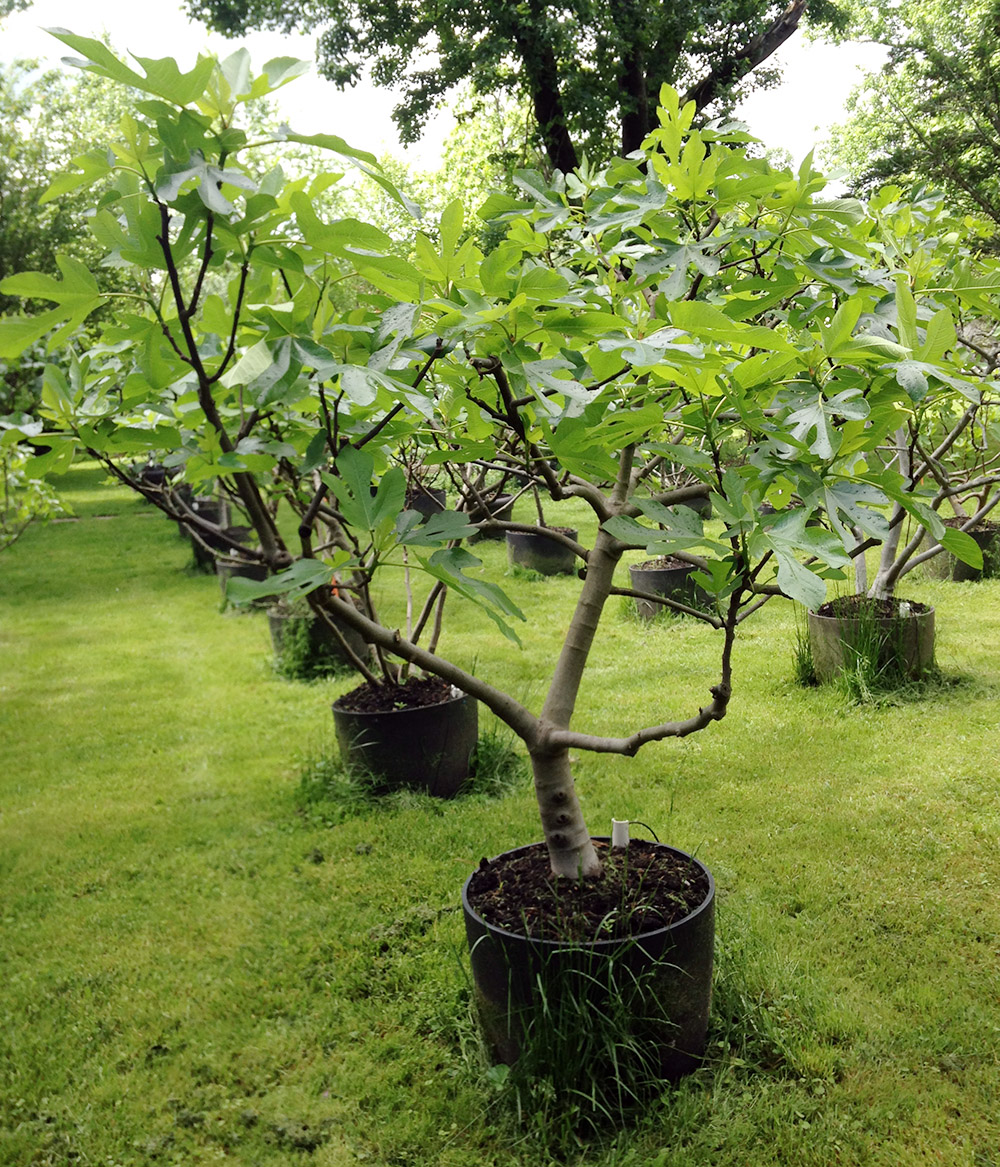
Fig Care
Congratulations – you are the owner of a potted fig tree. Growing is a lot easier than people think. With some basic care, this Mediterranean plant will thrive and you’ll enjoy fresh figs soon!
Why Potting?
Potted fig trees are becoming very popular lately, since growing the plants in pots eliminates worries over winterizing.
Remember seeing grandparents or neighbors wrapping their fig trees in burlap or tarp? With potted fig trees, that’s not necessary. It’s true that fig trees cannot survive outdoors in the northeast unless they are covered and kept warm, but potting plants provides a more aesthetically pleasing way around this issue.
Where Can I Place My Tree?
Fig trees love sun! In fact, the more sun the better, since heat and sunlight help to ripen figs. You don’t necessarily need full sun all day; three-quarters of a day will work too.
Potted fig trees make wonderful focal points in gardens and on decks/verandas.Trees can be stored outside once the last hard frost has occurred, so typically late April or early May, just like annual flowers. A hard frost will not harm the tree, but it will kill the opening buds and delay growth. Your plant should be brought indoors around the middle of November, once all of the leaves have fallen off. Don’t worry – one or two frosts will not kill your tree.
How Often Should I Water My Tree?
In spring, it’s best to water fig trees every other day. In summer, depending on how hot it is outside, you may need to water twice a day. This part is critical – you cannot let your tree dry out. It will stress the tree and the figs will fall off (nobody likes stress, even fig trees!).
Where Should I Store it in the Winter?
You should not bring a fig tree into your house for the winter, or into a greenhouse. You want the fig tree to go dormant, as it’s a critical part of the growing cycle. Bring your dormant tree into a cool garage or unheated basement. The temperature should be between 10 and 40 degrees.
Do I Need to Trim My Tree?
Yes, yes and oh, yes! Figs grow on new growth. The more you prune your tree, the more branching you will get. The more branches, the more figs. Please do not be afraid. Branches should be pruned by 1/3. Where you make a cut, you’ll soon see growth of two or three branches from that cut. Prune in late winter, usually March or April, before budding, or in late fall, around Halloween, or once the tree is done fruiting.
Should I Fertilize it?
Please do! Fig trees are not heavy feeders, but they require fertilization once or twice a year. Luckily for you, I’ve provided one years’ worth of fertilizer to get you started. Simply put fertilizer on top of the soil and work it in about a half inch or so in the spring time. When the danger of frost has passed, you can bring your tree outdoors.
The fertilizer I recommend is Osmocote Plus slow release, which can be purchased at any big box store. Follow the instructions on the label and do not over-fertilize, as you’ll have an unhappy tree on your hands.
When are the Figs Ripe?
Now, the fun part! Most varieties I sell are friendly to the northeast and ripen in time for mid- to late-summer. They do not flower, but you will see small figs develop in the late spring. These are not ready for picking. The figs will start to swell as they ripen, depending on the variety and weather that season, around the second week of August and all the way through October. A good sign that they are fully ripe is that they’ll begin to feel soft to the touch and droop a tiny bit. Be patient! Don’t pick your figs too early. Most of the flavor and sugars develop in the last 24 hours or so.
Who Should I Call if I Have Questions?
Obviously, call me – 845-309-0836. I’m here for the lifetime of your fig tree. There are also many great resources online. One forum is www.ourfigs.com and there are several Facebook groups, What the Fig and Northern Fig Growers are two of my favorites. Also, be sure to like The Potted Fig on Facebook. I’ll share information, resources, photos and videos regularly and would love for you to share pictures of your trees!